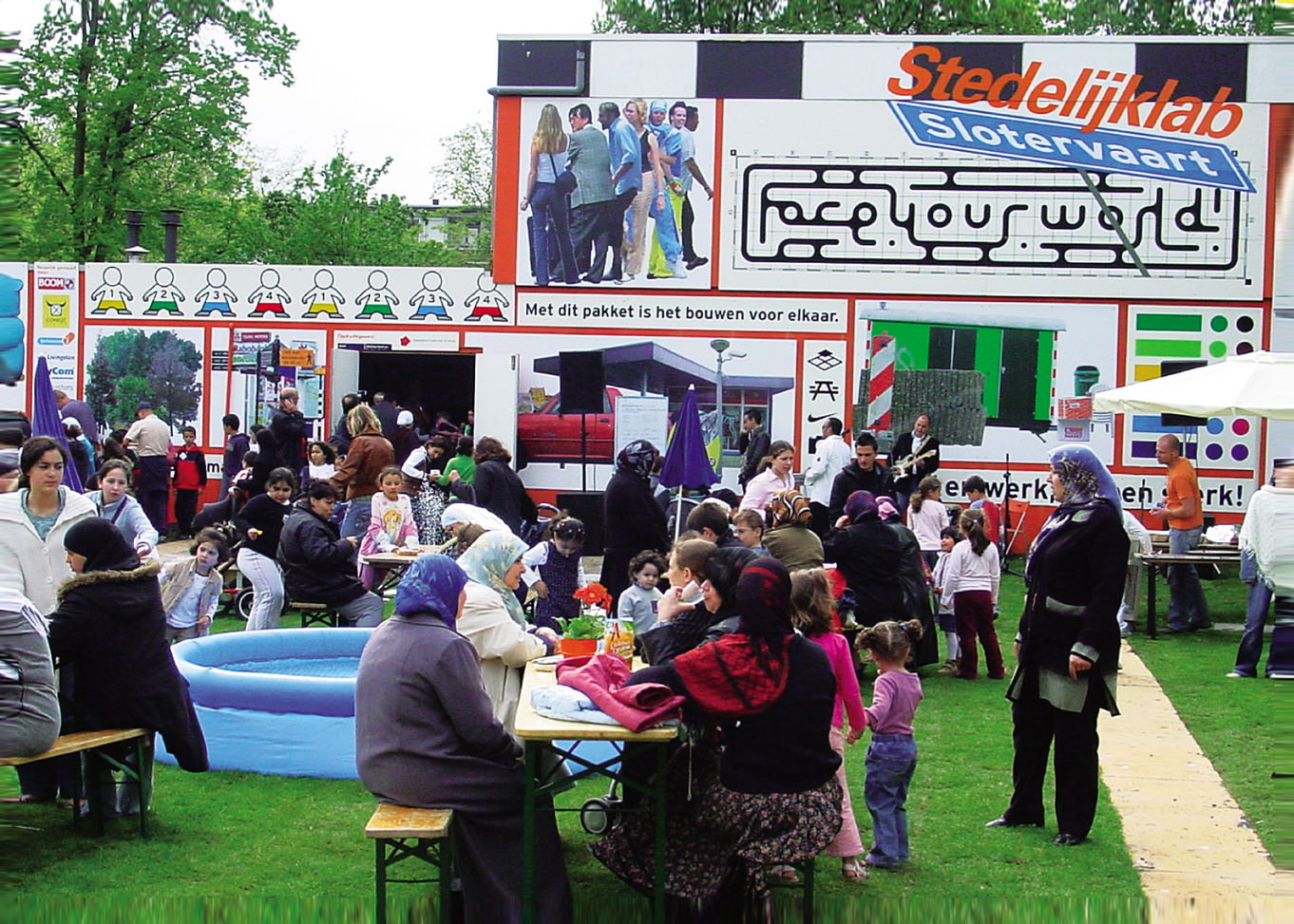Phase 0: Starting pointPhase 1: ExploringPhase 2: SketchingGreenbeltMeeting neighborhood supervisors (1)Mothers of the pupilsWorkshop Blue Elephant (2)Do-greenWorkshop local women (2)Meeting neighborhood supervisors (2)Workshop local girls (1)RecyclingWorkshop Blue Elephant (3)Discussion sport and playWorkshop 50+ (1)Regular opening StedelijkLabChillin'Workshop sport and playCity squares bus tourPresentation of 3 scenariosPhase 3: ConsultationPhase 4: BuildingPhase 5: Executing
Week 20: Open door day UrbanLab Slotervaart
On 19 May an Open Day in the Urban Lab Slotervaart was held to present the scenarios. More than 600 people came and looked at the ideas for the future Staalman Park, as well as enjoying a picnic on the just completed grass field (following a design of the schoolchildren) next to the Urban Lab. The open day was organized in cooperation with Streetwise and Sciandri. Over 600 people came to see the ideas for the park
Over 600 people came to see the ideas for the park
Scenario 1: Security
There is a very explicit desire for a safe park. Not because of concerns about trouble from the neighbourhood, but primarily out of fear of attracting problems from outside the area. During various meetings, aspects like management and supervision were discussed. The idea of erecting a fence around the park was frequently brought up. This compulsion to close off a section of the public space raises a number of crucial questions.Closing off a park – and therefore excluding people – seems at odds with the essence of public space. Public space, after all, belongs to all. The question is whether people feel sufficiently involved with the park when it belongs to everyone? Is the park then for everyone or for no one? Is closing off the park the basis for involvement from the neighborhood with the park?
And is this involvement, in turn, not the very precondition necessary for the emergence of a community?
 Security
Security
Scenario 2: Encounter
It must become a park for everyone. It must also be a park, where people can meet. But who is everyone? The area is a very diverse community with divergent wishes and hopes. The neighborhood is composed of different groups, each with a different vision about having their own place in the park. Young people want a ‘place to chill’ while older people want a quiet spot away from the hubbub of playing children. Others, on the contrary, want a spot close to the playground. Still others want a meadow where they can picnic with their families. Paradoxically enough, a park for everyone thus seems to call for specific areas for specific groups. Encounter
Encounter
Scenario 3: Activity
The brief calls for a park. A peaceful, green space in the heart of the area everyone can come to. A space that offers local residents the opportunity to meet one another. At the same time there is a great demand for activities in the park. The park is mostly seen as a ‘do-park’. This is partly inspired by the lack of facilities in the neighborhood itself. The problem is that many of these activities require a great deal of space and often are not of a green character. So if all these activities are included in the park, there won’t be much greenery left in it. Therefore it will be primarily necessary to come up with combinations of the activities with the greenbelt, such as grass and trees. This so-called ‘do-green’ makes it possible to develop a park that provides room for many activities in spite of its green character. Activity
Activity